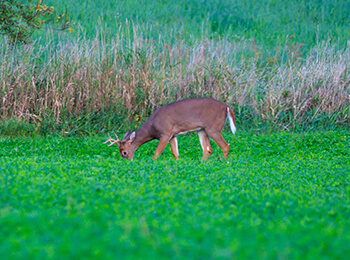How to plant the best food plots
Sep 16, 2020

It’s no secret that planting food plots can greatly increase your odds of attracting desired wildlife. However, successful food plots regular planting and management. Here’s seven tips you consider;
These guidelines should help improve your hunting or wildlife-viewing success. Head to your local Co-op to pick up all your food plot needs.
- Asking the right questions
- Stay in for the long haul
- Test the soil
- Pick your plant
- Always start clean
- Control your weeds
- Prohibit access to a small area
These guidelines should help improve your hunting or wildlife-viewing success. Head to your local Co-op to pick up all your food plot needs.